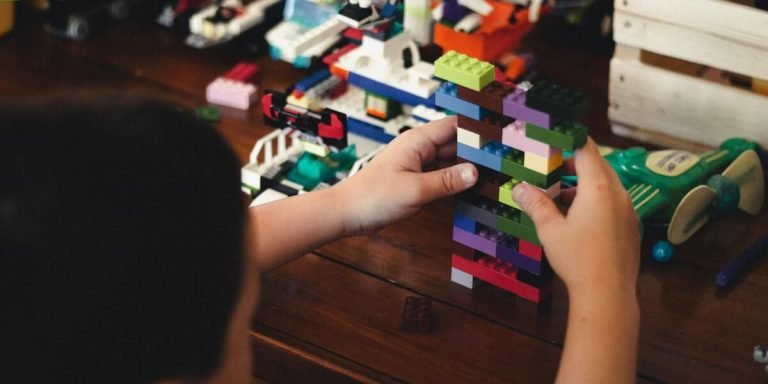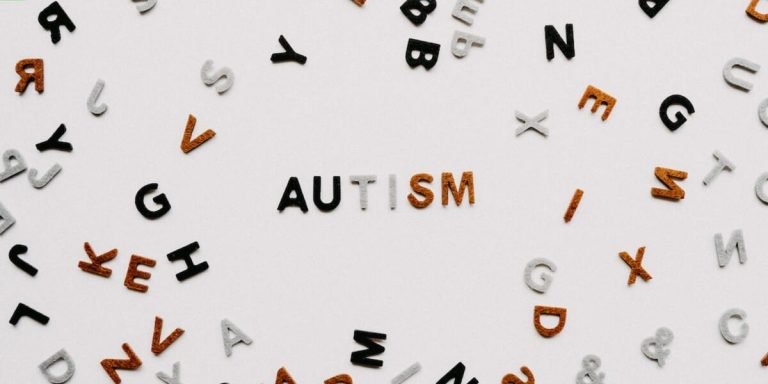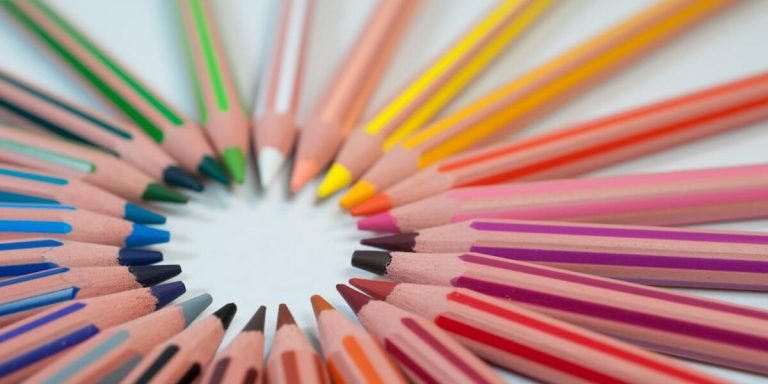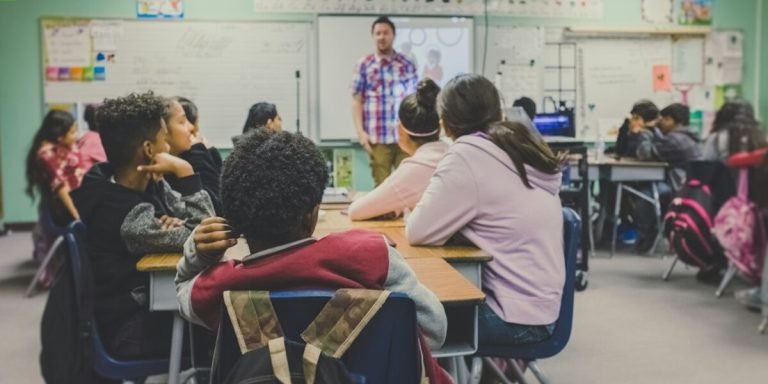Specially Designed Instruction: A Comprehensive Guide for Parents and Educators
The world of childhood education can often throw a myriad of terms at parents and educators alike, but few are as crucial to understand as “specially designed instruction”. This approach is integral in the drafting and implementation of special education programs. It’s aimed at crafting unique learning plans that accommodate each child’s individual needs based on their disabilities or learning difficulties.
Grasping the concept and intricacies involved in specially designed instruction (SDI) goes beyond just understanding its definition; it also involves knowing how it aids children with particular educational requirements. SDI stands out among other teaching methods due to its customized structure, specifically formulated for improving academic performance through explicit skill-building techniques. These assist children with various types of exceptionalities ranging from mild cognitive impairments to severe physical handicaps.
Did you know?
Did you know that Specially Designed Instruction (SDI) isn’t a one-size-fits-all approach but is tailored based on individual needs? According to the Individuals with Disabilities Education Act, SDIs are developed specifically for each child’s unique learning requirements.
Understanding Specially Designed Instruction in Special Education
“Specially Designed Instruction (SDI) is a vital component in special education that tailors the educational process to meet individual needs. As we navigate 2023, it’s worth noting how this concept has been progressively integrated with technology for better learning outcomes. The primary goal of SDI is ensuring all students can not only access but also progress within their general curriculum despite obvious or hidden challenges they might face.
This inclusive approach uses specific and purposeful teaching techniques adapted from evidence-based methods based on continuous assessments. It ensures every child feels connected and relevant in our diverse classrooms today; thanks mainly to advancements in modern technologies like adaptive software, virtual reality (VR), augmented reality (AR), among others.
Key Components of Effective Specially Designed Instruction
The specially designed instruction (SDI) plays an integral role in the learning journey of children with unique educational needs. SDI is a teaching method specifically tailored to meet individual students’ distinctive requirements using effective techniques, strategies and resources.
One key component that sets SDI apart from other forms of education is its customization towards the learner’s personal skill set. The instruction isn’t one-size-fits-all; it’s adjusted according to each child’s distinct ways of understanding and processing information for better comprehension.
Secondly, this approach heavily relies on data-driven decision making. Teachers assess learners’ progress through ongoing evaluation rather than waiting until the year-end tests or exams—thereby intervening at early stages if they notice signs of struggle in any particular area.
Next up is adaptation – working hand-in-hand with personalization also comes modification in course content as well as delivery methods depending upon a student’s abilities and potential areas for growth supported by their Individualized Education Program (IEP).
A noteworthy feature about SDI involves direct instructions—a formative element where teachers provide clear, concise guidelines aimed toward gaining specific skills or knowledge—the sort your digital GPS uses when you can’t find your way back home!
The Role of Individualized Education Programs (IEPs)
Individualized Education Programs, or IEPs, play a pivotal role in special education. It is an imperative tool that shapes the educational path for children with unique learning needs. The purpose behind these personalized programs purely lies within its name — individualization.
A cornerstone feature of specially designed instruction, IEPs ensure each child’s distinct requirements are comprehensively addressed. With technology integration becoming more prevalent every passing year since 2023 and beyond, it has become even easier to tailor-make lessons catering to specific student needs.
Nevertheless, constructing efficient IEPs requires team effort including parents/guardians, teachers who know the child well and other relevant professionals like therapists and psychologists. This collaborative approach lets everyone weigh-in on goals fitting aptly into the overall plan while also allowing constant monitoring of progress at regular intervals throughout their academic journey.
Specially-designed instructions root themselves onto core elements such as adaptations in content delivery through assistive tech-tools like speech-to-text software for dyslexic learners making information accessible effortlessly.
Implementing Specially Designed Instruction: Strategies and Tools
Specially Designed Instruction (SDI) refers to the unique educational plan crafted to cater for children with special needs. As we embrace a more inclusive 2023, incorporating SDI in regular classrooms becomes critical. Technology integration plays an essential role here by giving these students access to engaging and interactive learning experiences that meet their individual needs.
Implementing Specially Designed Instruction involves adopting various strategies and tools designed predominantly around technology. For instance, teachers may leverage assistive technologies such as text-to-speech software or Braille readers available on tablets and computers; they are instrumental in enhancing accessibility while promoting independent navigation of digital resources. The aim is not only at developing academic skills but also focussing on crucial life abilities through social-emotional learning modules integrated into these tech platforms.
Furthermore, virtual reality can offer immersive therapeutic interventions like sensory rooms creating calming environments catering specifically for those with Sensory Processing Disorders(SPD). Similarly,Tutor bots could provide one-on-one assistance outside of school hours, enabling educators to customize instruction based on each student’s performance data while maintaining confidentiality intact.
The importance lies not just upon using technological tools but correctly integrating them strategically aligned towards addressing every child’s distinct requirements without compromising any inclusivity aspects within traditional classroom settings.
Incorporating Assistive Technology for Enhanced Learning
Specially designed instruction is a purposeful, planned and systematic method of teaching that focuses on improving the educational outcomes for students with disabilities. Integrating technology in these methods has been recognized as an effective approach towards enhancing learning experiences.
Assistive Technology (AT) plays a significant role in specially designed instruction. AT refers to any device or system used to enhance or maintain the capabilities of children with special needs. These assistive tools are often integrated into instructional plans based on Individualized Education Programs (IEPs), which ensure each child’s unique learning requirements are met.
Incorporating Assistive Technology can follow several strategies:
1.) **Use technique-wise Tools:** The choice of Assistive Technology depends largely upon what specific area it will be deployed – from reading support using audiobooks, text-to-speech software for writing assistance to visual timers that help manage time effectively.
2.) **Training Teachers**: Educators need thorough training not only about operation but also integrating these tools within course curriculum harmoniously while ensuring they meet the student’s individual goals.
3.) **Communication Enhancement**: Technologies like speech-generating devices could aid non-verbal students’ communication significantly, allowing them participate more actively during classroom interactions.
4.) **Social Interaction Improvement**: There exist smart programs capable of helping learners understand social cues better thereby promoting enhanced interaction between peers through virtual reality simulations etc.
Differentiated Teaching Techniques for Diverse Learners
Understanding that every child is unique, with their specific learning needs and pace, differentiated teaching techniques have become an essential part of specially designed instruction. These strategies primarily focus on addressing the diverse learning styles present in our classrooms. Teachers employing these methods cater to different learners by adjusting lessons according to each student’s ability level.
To begin with, flexible grouping reimagines a traditional classroom setup where students often work as one group or individually. In this model, educators organize children into various small groups based on their skill levels or interests for certain activities or tasks—enabling them effectively target individual needs while promoting peer interaction and collaboration.
Then we have scaffolding – it’s like constructing a building; you start with the base then gradually add more layers till completion. Similarly, complex concepts are broken down into smaller manageable parts which make comprehension easier for all students especially those grappling with cognitive challenges.
Moreover incorporating visual aids can greatly enhance understanding particularly among visual learners who find interpreting images significantly easier than text-based content alone. This could include anything from pie charts during math lessons to diagrams explaining scientific theories – making abstract ideas tangible thus boosting retention rates over time among students struggling acadically because they learn better visually rather than auditorily .
On another note technology has paved way new opportunities differentiation within specialised education framework . For example adaptive learning software customizes educational material respective learner ‘s proficiency leveraging AI identify areas improvement need support ensuring no left behind academic journey .
Evaluating the Impact of Specially Designed Instruction on Student Outcomes
Specially designed instruction is undeniably playing a pivotal role in reshaping our current system of education. This innovative approach, grounded on the principles of personalized learning and individualized support, aims to elevate student outcomes across all spectrums. It’s no longer an option but rather a necessity – particularly when it comes to supporting students with special needs.
In recent years, we’ve witnessed how technology integration in education has accelerated this transformation process. Varied forms of educational software catered specifically for differently-abled learners have emerged – some focusing on improving cognitive abilities while others target enhancements in communication skills or social interactions. The positive impact these tools bring about by facilitating specially designed instruction cannot be overstated.
Evaluating the success rate of such interventions becomes paramount as more technologies are integrated into classrooms worldwide each day. A comprehensive analysis that delves deep into the effectiveness and influence that these resources bear upon child development will enable educators and parents alike to make informed decisions pertaining their choice and application in curriculums for optimized results.
Measuring Progress: Assessment Approaches in Special Education
One of the critical aspects in special education is assessing how well “specially designed instruction” impacts student outcomes. With technology integration being a significant part of contemporary teaching methods, measuring progress has to be more systematic and dynamic than ever before.
There are several ways this measurement can happen effectively:
1. Standardized Testing: This common method employs aptitude or achievement tests that measure students’ abilities compared with others at their grade level. These exams could include assessments for reading proficiency, mathematical skills, and other necessary academic capabilities.
2. Curriculum-Based Measurement (CBM): CBMs offer specific data about your child’s educational growth over time with respect to specially designed instructions incorporated into learning plans.
3. Progress Monitoring Tools: Technology comes heavily into play here; there are various digital tools available today which track student’s performance regularly and provide real-time status on skill acquisition levels pertinent to their Individual Education Program (IEP) goals.
4. Performance Assessments: In these subjective evaluations, teachers observe the individual strengths & weaknesses exhibited by students during classroom activities aligned with specifically-created instructional materials – noting areas where further reinforcement might be needed as well as apparent gains achieved through specialized techniques used previously.
5- Portfolios/Evidence-based assessment: A portfolio showcasing samples of work produced at different times throughout an academic year offers tangible proof-of-progress while helping educators pinpoint exact stages when breakthroughs occurred thanks largely because of custom-designed teaching approaches administered under controlled circumstances earlier.
Case Studies: Success Stories of Specially Designed Instruction
Specially designed instruction (SDI) plays a pivotal role in the era of inclusive education. The adoption and integration of technology have further refined SDI, leading to substantial improvements in student outcomes.
One such instance is demonstrated by an elementary school in California where students were struggling with traditional teaching methods. The introduction of specially designed instruction tailored to individual learning needs was transformative. Audio-visual aids, interactive exercises, and other digital resources made learning more engaging for these children.
Within just a year, significant boosts were observed not only in academic performance but also their motivation levels!
At another high school located on the east coast – Maine specifically; teachers employed virtual reality as part of their SDI strategy for physics lessons. Students could visually comprehend otherwise complex concepts like gravity or electromagnetic fields through immersive environments provided by VR headsets — enabling them better understanding without needing much language processing skills which are usually difficult especially for those having dyslexia or related conditions.
Conclusion
In the winding labyrinth of childhood education, “specially designed instruction” serves as a beacon that ensures every child experiences learning tailored to their unique needs. It’s an intuitive tool for parents and educators alike; it bridges gaps, fosters understanding and bolsters inherent talents lying within every young mind. While it might seem intricate at first glance, with patience and dedication we can unlock its numerous benefits.
Welcome modifications that classroom strategies bring to address children’s diverse needs as you continue exploring various facets of early childhood education. Dive deeper into our website for more resources on nurturing these little powerhouses of potential.
Embrace the knowledge waiting around each virtual corner, reinforcing effective parent-educator collaboration and other pivotal aspects of educating youngsters. Stay curious!







